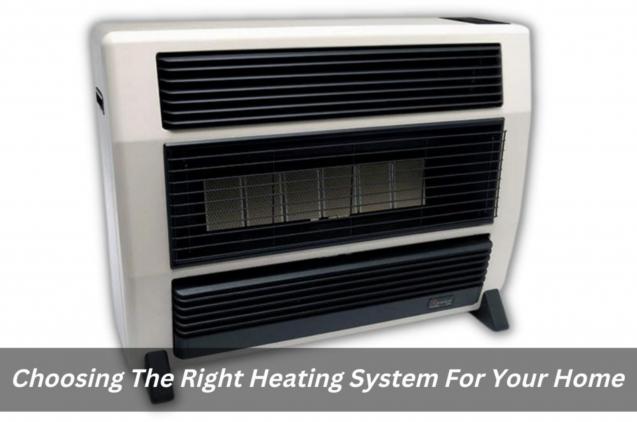
How Can I Fix A Clogged Water Heater?
By Apex Gas Heater Services|March 17, 2023
Clogged water heaters are a common issue for many homeowners and can be caused by a variety of factors. The most likely cause is sediment buildup in the water heater tank, which can block the drain valve and make it difficult to drain a water heater properly. Other potential causes include malfunctioning pilot lights, natural gas appliances, or clogged hoses connected to the tank.
It’s important to identify and address these issues promptly in order to ensure that you have access to hot water. If your water heater isn’t draining properly, it is best to contact a professional service technician who specializes in gas appliances and safety checks. They will be able to quickly diagnose and fix any problems with your system so that you can enjoy hot showers again within 24 hours.
Regular services should also be done every few months as preventive maintenance measures to ensure that your system continues running smoothly without any problems.
DIY Solutions
If you’re experiencing issues with your water heater, it is possible to try a few DIY solutions before calling a professional service technician. The first step is to locate and open the drain valve on the side of the tank. If the drain valve is clogged, use a garden hose to help clear any debris that may be blocking it. Once the valve is clear, attach one end of the hose to the drain valve and the other end of the hose to a hot water faucet.
Then, turn on both valves and allow them to run for several minutes in order to flush out any sediment buildup inside of the tank. If this doesn't work, then it's best to call a professional who can inspect your system and make sure that there aren't any other underlying causes for your clogged water heater.
Check The Hot Water Faucet
It is important to check the hot water faucet when diagnosing a clogged water heater. To do this, first, turn off the power to the hot water heater and make sure it is completely cool before proceeding. Then, locate and open the hot water faucet near the tank and let any remaining hot water run out until it has stopped. If no water comes out of the faucet after a few minutes, this could indicate an issue with your unit’s pilot light or other gas appliances.
In this case, it is best to call a professional who can assess and repair any necessary components to ensure safety checks are up-to-date. Additionally, if cold water is running from the faucet but there is little or no pressure coming from it, then you may need to remove the hose from the drain valve in order to clear any blockage in order for your system to work properly again.
Flush The Toilet Bowl
Flushing the toilet bowl is a necessary step in keeping your bathroom clean and hygienic. Flushing helps remove dirt, debris, and waste from within the bowl, which can help prevent odours and bacteria from forming. To flush your toilet bowl properly, make sure you are holding down the handle for at least 10 seconds so that a sufficient amount of water is released into the bowl to effectively remove any residue or buildup.
Additionally, it is important to check the tank lid regularly for any signs of damage or wear and tear that could affect its ability to flush correctly. You may also want to consider scheduling regular services with a plumber or other gas appliance service provider in order to ensure that safety checks are up-to-date. Flushing your toilet bowl on a regular basis will help keep your bathroom clean, hygienic, and free of any unwanted odours or bacteria.
Clean Out The Floor Drain
A floor drain is an important component of many residential and commercial plumbing systems. It helps to protect against floods by allowing water and other liquids to drain away quickly and safely, while also preventing any unwanted odours or bacteria from entering the home or business. Cleaning out the floor drain regularly can help ensure that it remains in proper working order.
To do this, start by disconnecting the hose from the hot water faucet and then connecting it to a garden hose. Turn on the cold water and open the drain valve, allowing all of the water in the tank to flow out into a bucket or other receptacle.
Once this is done, remove the hose from the drain valve before closing it again. If necessary, you may also need to use a plunger or snake to clear any clogs that may be present before reattaching the hose back onto the hot water faucet.
Finally, check for any signs of damage around the area that may suggest regular services are required for safety checks. With these steps followed correctly, your floor drain should remain clean and free-flowing for many years to come.
Open the Water Heater Drain Valve
The water heater drain valve is a crucial part of the plumbing system in many homes and businesses. It is responsible for draining away excess hot water from the tank, allowing it to cool down before being heated again. If the drain valve becomes clogged, it can cause the tank to overheat and eventually stop working altogether. To prevent this from happening, it is important to regularly open the drain valve and allow any built-up dirt or debris to escape outside.
To open the drain valve, start by disconnecting the hose from the hot water faucet and connecting it to a garden hose instead. Turn on the cold water tap and then open the drain valve, allowing all of the water in the tank to flow out into a bucket or other receptacle.
Once this is done, remove the hose from the drain valve before closing it again. If necessary, you may also need to use a plunger or snake to clear any clogs that may be present before reattaching the hose back onto the hot water faucet.
It is important to remember that opening up your water heater's drain valve should only be done as a last resort if all other attempts at unclogging have failed. If you are unable to get your system running again after attempting these steps, contact an experienced gas appliances technician who can carry out safety checks and regular services as needed for optimal performance.
Adjust The Water Pressure
The water pressure of a plumbing system is extremely important to ensure that all fixtures and appliances are working optimally. If the pressure is too high or too low, it can lead to problems such as leaking pipes, clogged drains, and poor water flow. Adjusting the water pressure in your home or business can be done manually with a few simple tools.
First, locate the main shut-off valve for your system and turn off the water supply before proceeding. Next, attach a pressure gauge to an outside faucet on your property and open up the tap to measure the current PSI (pounds per square inch). The ideal range should be between 40 and 80 PSI depending on local regulations.
To adjust this reading, you will need to locate the pressure-reducing valve near the main line and use an adjustable wrench to make any necessary changes. Once you have adjusted this valve, check the gauge again after running some water through it for a few minutes. If you find that you need further assistance in adjusting your water pressure correctly, contact a licensed plumber who can help get things back up and running safely again.
Install a Water Softener System
Water softeners are a great way to reduce the number of harsh minerals present in your water, making it gentler on your skin and hair. Installing a water softener system is relatively straightforward but there are certain steps that should be taken in order to ensure its proper functioning.
First, make sure you purchase a water softener system that's compatible with your plumbing or water heater setup. It also needs to be certified for use in the area where you live, as regulations can vary from state to state. Once you have the necessary parts, turn off the main water supply and install the components according to the instructions. After installation is complete, connect all the pipes and check for any leaks.
Next, attach the bypass valve so you can switch between soft and hard water at any time. Finally, fill up the brine tank with salt tablets before allowing it to cycle through for several hours before using it in your home or business. Regularly maintaining your water softener system will help keep it working properly and prevent future problems from occurring down the line.
Clear Mineral Deposits with a Pipe Wrench and Drain Cleaner
If you notice your water heater's pipes and fixtures are clogged due to mineral deposits, it is important to take steps to clear them out. A pipe wrench can be used to loosen the connections and a drain cleaner can help break up any build-up of minerals that may be causing an issue.
To begin, turn off the power or gas supply to the water heater. Then, use a pipe wrench to disconnect the pipes leading into and out of the tank. Make sure you have towels handy in case any water spills as you disconnect them. Once disconnected, use a garden hose or bucket to slowly drain the tank until all of the water has been removed.
Once drained, make sure all of the fittings connecting the pipes are completely dry before spraying a commercial-grade drain cleaner directly onto them. Allow this foam cleaner to sit for several hours before running hot water through the pipes for about 10 minutes. This will help wash away any remaining residue from mineral deposits that may have built up over time.
Finally, reattach all of the fittings using pipe thread sealant instead of Teflon tape so they will stay secure in place while also preventing future leaks from occurring due to mineral build-up. With these simple steps, you can easily clear out mineral deposits from your water heater and ensure it runs efficiently for years to come.
Professional Plumber Solutions
Finding a reliable plumber for your water heater issues can be challenging. Professional plumber solutions provide the expertise and experience needed to effectively diagnose, repair, or replace any type of water heater system. These services include safety checks, regular maintenance, installation and repair of gas, electric and tankless water heaters. A professional can easily identify the source of the problem, such as a faulty pilot light, clogged drain valve or cold water supply line.
In addition to offering comprehensive water heater services, plumbers also provide 24-hour emergency service in case any unexpected issues arise. This means that help is just a phone call away if you ever need it! Plumbers are also trained to work on other gas appliances such as Rinnai gas heaters and can perform safety checks as well as regular services to keep your home comfortable all year round.
Whether you’re looking for repair or replacement of your existing system or need help installing a new one, search online for a "gas heater service near me". With their knowledge and expertise in all things related to water heating systems, they can ensure that your home gets the best possible service available.
It’s important to identify and address these issues promptly in order to ensure that you have access to hot water. If your water heater isn’t draining properly, it is best to contact a professional service technician who specializes in gas appliances and safety checks. They will be able to quickly diagnose and fix any problems with your system so that you can enjoy hot showers again within 24 hours.
Regular services should also be done every few months as preventive maintenance measures to ensure that your system continues running smoothly without any problems.
DIY Solutions
If you’re experiencing issues with your water heater, it is possible to try a few DIY solutions before calling a professional service technician. The first step is to locate and open the drain valve on the side of the tank. If the drain valve is clogged, use a garden hose to help clear any debris that may be blocking it. Once the valve is clear, attach one end of the hose to the drain valve and the other end of the hose to a hot water faucet.
Then, turn on both valves and allow them to run for several minutes in order to flush out any sediment buildup inside of the tank. If this doesn't work, then it's best to call a professional who can inspect your system and make sure that there aren't any other underlying causes for your clogged water heater.
Check The Hot Water Faucet
It is important to check the hot water faucet when diagnosing a clogged water heater. To do this, first, turn off the power to the hot water heater and make sure it is completely cool before proceeding. Then, locate and open the hot water faucet near the tank and let any remaining hot water run out until it has stopped. If no water comes out of the faucet after a few minutes, this could indicate an issue with your unit’s pilot light or other gas appliances.
In this case, it is best to call a professional who can assess and repair any necessary components to ensure safety checks are up-to-date. Additionally, if cold water is running from the faucet but there is little or no pressure coming from it, then you may need to remove the hose from the drain valve in order to clear any blockage in order for your system to work properly again.
Flush The Toilet Bowl
Flushing the toilet bowl is a necessary step in keeping your bathroom clean and hygienic. Flushing helps remove dirt, debris, and waste from within the bowl, which can help prevent odours and bacteria from forming. To flush your toilet bowl properly, make sure you are holding down the handle for at least 10 seconds so that a sufficient amount of water is released into the bowl to effectively remove any residue or buildup.
Additionally, it is important to check the tank lid regularly for any signs of damage or wear and tear that could affect its ability to flush correctly. You may also want to consider scheduling regular services with a plumber or other gas appliance service provider in order to ensure that safety checks are up-to-date. Flushing your toilet bowl on a regular basis will help keep your bathroom clean, hygienic, and free of any unwanted odours or bacteria.
Clean Out The Floor Drain
A floor drain is an important component of many residential and commercial plumbing systems. It helps to protect against floods by allowing water and other liquids to drain away quickly and safely, while also preventing any unwanted odours or bacteria from entering the home or business. Cleaning out the floor drain regularly can help ensure that it remains in proper working order.
To do this, start by disconnecting the hose from the hot water faucet and then connecting it to a garden hose. Turn on the cold water and open the drain valve, allowing all of the water in the tank to flow out into a bucket or other receptacle.
Once this is done, remove the hose from the drain valve before closing it again. If necessary, you may also need to use a plunger or snake to clear any clogs that may be present before reattaching the hose back onto the hot water faucet.
Finally, check for any signs of damage around the area that may suggest regular services are required for safety checks. With these steps followed correctly, your floor drain should remain clean and free-flowing for many years to come.
Open the Water Heater Drain Valve
The water heater drain valve is a crucial part of the plumbing system in many homes and businesses. It is responsible for draining away excess hot water from the tank, allowing it to cool down before being heated again. If the drain valve becomes clogged, it can cause the tank to overheat and eventually stop working altogether. To prevent this from happening, it is important to regularly open the drain valve and allow any built-up dirt or debris to escape outside.
To open the drain valve, start by disconnecting the hose from the hot water faucet and connecting it to a garden hose instead. Turn on the cold water tap and then open the drain valve, allowing all of the water in the tank to flow out into a bucket or other receptacle.
Once this is done, remove the hose from the drain valve before closing it again. If necessary, you may also need to use a plunger or snake to clear any clogs that may be present before reattaching the hose back onto the hot water faucet.
It is important to remember that opening up your water heater's drain valve should only be done as a last resort if all other attempts at unclogging have failed. If you are unable to get your system running again after attempting these steps, contact an experienced gas appliances technician who can carry out safety checks and regular services as needed for optimal performance.
Adjust The Water Pressure
The water pressure of a plumbing system is extremely important to ensure that all fixtures and appliances are working optimally. If the pressure is too high or too low, it can lead to problems such as leaking pipes, clogged drains, and poor water flow. Adjusting the water pressure in your home or business can be done manually with a few simple tools.
First, locate the main shut-off valve for your system and turn off the water supply before proceeding. Next, attach a pressure gauge to an outside faucet on your property and open up the tap to measure the current PSI (pounds per square inch). The ideal range should be between 40 and 80 PSI depending on local regulations.
To adjust this reading, you will need to locate the pressure-reducing valve near the main line and use an adjustable wrench to make any necessary changes. Once you have adjusted this valve, check the gauge again after running some water through it for a few minutes. If you find that you need further assistance in adjusting your water pressure correctly, contact a licensed plumber who can help get things back up and running safely again.
Install a Water Softener System
Water softeners are a great way to reduce the number of harsh minerals present in your water, making it gentler on your skin and hair. Installing a water softener system is relatively straightforward but there are certain steps that should be taken in order to ensure its proper functioning.
First, make sure you purchase a water softener system that's compatible with your plumbing or water heater setup. It also needs to be certified for use in the area where you live, as regulations can vary from state to state. Once you have the necessary parts, turn off the main water supply and install the components according to the instructions. After installation is complete, connect all the pipes and check for any leaks.
Next, attach the bypass valve so you can switch between soft and hard water at any time. Finally, fill up the brine tank with salt tablets before allowing it to cycle through for several hours before using it in your home or business. Regularly maintaining your water softener system will help keep it working properly and prevent future problems from occurring down the line.
Clear Mineral Deposits with a Pipe Wrench and Drain Cleaner
If you notice your water heater's pipes and fixtures are clogged due to mineral deposits, it is important to take steps to clear them out. A pipe wrench can be used to loosen the connections and a drain cleaner can help break up any build-up of minerals that may be causing an issue.
To begin, turn off the power or gas supply to the water heater. Then, use a pipe wrench to disconnect the pipes leading into and out of the tank. Make sure you have towels handy in case any water spills as you disconnect them. Once disconnected, use a garden hose or bucket to slowly drain the tank until all of the water has been removed.
Once drained, make sure all of the fittings connecting the pipes are completely dry before spraying a commercial-grade drain cleaner directly onto them. Allow this foam cleaner to sit for several hours before running hot water through the pipes for about 10 minutes. This will help wash away any remaining residue from mineral deposits that may have built up over time.
Finally, reattach all of the fittings using pipe thread sealant instead of Teflon tape so they will stay secure in place while also preventing future leaks from occurring due to mineral build-up. With these simple steps, you can easily clear out mineral deposits from your water heater and ensure it runs efficiently for years to come.
Professional Plumber Solutions
Finding a reliable plumber for your water heater issues can be challenging. Professional plumber solutions provide the expertise and experience needed to effectively diagnose, repair, or replace any type of water heater system. These services include safety checks, regular maintenance, installation and repair of gas, electric and tankless water heaters. A professional can easily identify the source of the problem, such as a faulty pilot light, clogged drain valve or cold water supply line.
In addition to offering comprehensive water heater services, plumbers also provide 24-hour emergency service in case any unexpected issues arise. This means that help is just a phone call away if you ever need it! Plumbers are also trained to work on other gas appliances such as Rinnai gas heaters and can perform safety checks as well as regular services to keep your home comfortable all year round.
Whether you’re looking for repair or replacement of your existing system or need help installing a new one, search online for a "gas heater service near me". With their knowledge and expertise in all things related to water heating systems, they can ensure that your home gets the best possible service available.



